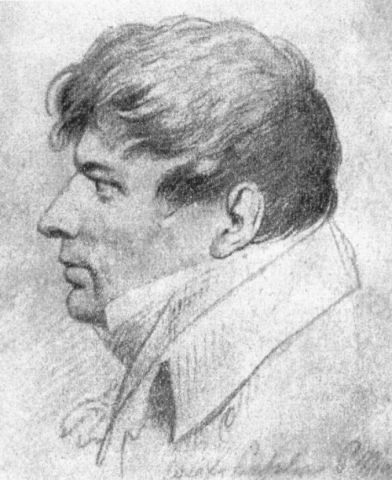Józef Peszka on:
[Wikipedia]
[Google]
[Amazon]
 Józef Peszka (19 February 1767, in
Józef Peszka (19 February 1767, in
from the ''
@ Sztuka Zaprasza. After that, until 1812, he took numerous trips throughout Lithuania and Russia, where he created watercolor and
File:Stanisław Małachowski - Peszka.jpg, Stanisław Małachowski
File:Lida. Ліда (J. Pieška, 1800).jpg, View of
Paintings by Peszka
in the
 Józef Peszka (19 February 1767, in
Józef Peszka (19 February 1767, in Kraków
Kraków (), or Cracow, is the second-largest and one of the oldest cities in Poland. Situated on the Vistula River in Lesser Poland Voivodeship, the city dates back to the seventh century. Kraków was the official capital of Poland until 1596 ...
– 14 September 1831, in Kraków) was a Polish painter and art professor; known mostly for his portraits and watercolor landscapes.
Biography
His first drawing lessons were with , an Austrian painter living in Kraków. He then studied painting in Warsaw withFranciszek Smuglewicz
Franciszek Smuglewicz ( lt, Pranciškus Smuglevičius; 6 October 1745 – 18 September 1807) was a Polish-Lithuanian draughtsman and painter. Smuglewicz is considered a progenitor of Lithuanian art in the modern era. He was precursor of hi ...
.Brief biography and list of worksfrom the ''
Biographisches Lexikon des Kaiserthums Oesterreich
''Biographisches Lexikon des Kaiserthums Oesterreich'' (English, ''Biographical Encyclopedia of the Austrian Empire'') (abbreviated ''Wurzbach'' from the author's surname) is a 60-volume work, edited and published by Constantin von Wurzbach, cont ...
'' @ German WikiSource. After doing a portrait of Hugo Kołłątaj
Hugo Stumberg Kołłątaj, also spelled ''Kołłątay'' (pronounced , 1 April 1750 – 28 February 1812), was a prominent Polish constitutional reformer and educationalist, and one of the most prominent figures of the Polish Enlightenment. He s ...
, he was introduced to members of the Great Sejm
The Great Sejm, also known as the Four-Year Sejm ( Polish: ''Sejm Wielki'' or ''Sejm Czteroletni''; Lithuanian: ''Didysis seimas'' or ''Ketverių metų seimas'') was a Sejm (parliament) of the Polish–Lithuanian Commonwealth that was held in War ...
and earned a commission to do portraits of other prominent political figures; work which kept him occupied until 1792.Brief biography@ Sztuka Zaprasza. After that, until 1812, he took numerous trips throughout Lithuania and Russia, where he created watercolor and
sepia
Sepia may refer to:
Biology
* ''Sepia'' (genus), a genus of cuttlefish
Color
* Sepia (color), a reddish-brown color
* Sepia tone, a photography technique
Music
* ''Sepia'', a 2001 album by Coco Mbassi
* ''Sepia'' (album) by Yu Takahashi
* " ...
toned landscapes with staffage
In painting, staffage () are the human and animal figures depicted in a scene, especially a landscape, that are not the primary subject matter of the work. Typically they are small, and there to add an indication of scale and add interest.
Before ...
as well as some vedute
A ''veduta'' (Italian for "view"; plural ''vedute'') is a highly detailed, usually large-scale painting or, more often, print of a cityscape or some other vista. The painters of ''vedute'' are referred to as ''vedutisti''.
Origins
This genre ...
. He spent some time with his former mentor, Smuglewicz, at Vilnius University
Vilnius University ( lt, Vilniaus universitetas) is a public research university, oldest in the Baltic states and in Northern Europe outside the United Kingdom (or 6th overall following foundations of Oxford, Cambridge, St. Andrews, Glasgow and ...
. From 1807 to 1810, he lingered in Niasvizh where he served as a court painter to Prince Michał Hieronim Radziwiłł
Prince Michał Hieronim Radziwiłł ( lt, Mykolas Jeronimas Radvila; 1744-1831) was a Polish nobleman, politician, diplomat and member of the Polish-Lithuanian Radziwill family. He was a Knight of the Order of the White Eagle (awarded on 7 Sep ...
.
In 1813, he returned to Kraków and taught art at the Jagiellonian University. In 1818, he helped organize the newly established School of Fine Arts and became a Professor there. In 1831, a few months before his death, he was named Director. During that time, he concentrated on painting portraits; mostly of military heroes, wealthy businessmen and their families and figures of the Polish Enlightenment
The ideas of the Age of Enlightenment in Poland were developed later than in Western Europe, as the Polish bourgeoisie was weaker, and szlachta (nobility) culture (Sarmatism) together with the Polish–Lithuanian Commonwealth political system (Gol ...
. He also did some historical scenes, which show the influence of Smuglewicz, and some scenes from Classical mythology.
Selected paintings
Lida
Lida ( be, Лі́да ; russian: Ли́да ; lt, Lyda; lv, Ļida; pl, Lida ; yi, לידע, Lyde) is a city 168 km (104 mi) west of Minsk in western Belarus in Grodno Region.
Etymology
The name ''Lida'' arises from its Lithuan ...
File:Viciebsk, Rynak-Vialikaja. Віцебск, Рынак-Вялікая (J. Pieška, 1800).jpg, Street Scene in Vitebsk
Vitebsk or Viciebsk (russian: Витебск, ; be, Ві́цебск, ; , ''Vitebsk'', lt, Vitebskas, pl, Witebsk), is a city in Belarus. The capital of the Vitebsk Region, it has 366,299 inhabitants, making it the country's fourth-largest c ...
File:Peszka Three muses.JPG, Three Muses
References
External links
Paintings by Peszka
in the
National Museum, Kraków
The National Museum in Kraków ( pl, Muzeum Narodowe w Krakowie), popularly abbreviated as MNK, is the largest museum in Poland, and the main branch of Poland's National Museum, which has several independent branches with permanent collections arou ...
{{DEFAULTSORT:Peszka, Jozef
1767 births
1831 deaths
18th-century Polish–Lithuanian painters
18th-century male artists
19th-century Polish painters
19th-century Polish male artists
Academic staff of Jagiellonian University
Polish landscape painters
Polish portrait painters
Polish watercolourists
Artists from Kraków
Polish male painters